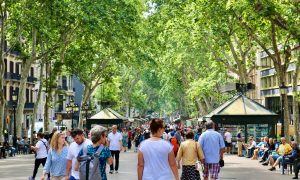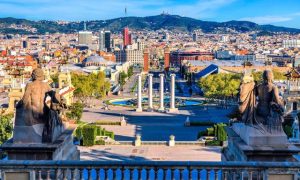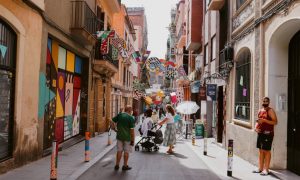
immigrantsSpain, in addition to enjoying the sunny Mediterranean flavor and high quality of life, understanding the cost of living is also an important part of planning a move to life. As one of the countries in Europe with a relatively low cost of living, Spain has attracted many immigrants. However, different cities, regions and individual needs have different impacts on the cost of living. In this article, we'll look at the costs of housing, education and healthcare to revealImmigration to Spainof real life expenses to help you plan your finances.
I. Housing costs: urban and regional differences
- Home buying and renting markets
- Cost of Buying a House
Property prices in Spain are relatively moderate in Europe, but vary considerably between cities. For example, in large cities such as Madrid and Barcelona, prices for city center apartments range from €3,000 to €6,000 per square meter, whereas in small and medium-sized cities such as Valencia and Seville, prices can drop to between €2,000 and €4,000. In addition, coastal areas such as Marbella and Alicante have relatively high prices due to their attraction to international buyers. - Rental costs
Renting is a more flexible option for immigrants who are not considering buying a home. In Madrid and Barcelona, the monthly rent for a one-bedroom apartment is around 800 to 1,500 euros, while in other cities or suburbs this price can drop to 500 to 800 euros.
- Cost of Buying a House
- additional surcharge
Whether you are buying or renting, you also need to consider property management fees, utilities and internet fees. Generally speaking, the monthly utility costs are between 100 and 150 euros, and the internet charges are around 30 to 50 euros. - Money Saving Tips
- Consider living in a suburb or small to medium-sized city to enjoy both lower home prices and a more leisurely pace of life.
- Shared rentals are a good option if you are on a budget.
II. Cost of education: public free, private diversified
- public education
Education in Spain is compulsory from 6 to 16 years of age and public education is provided free of charge, a benefit that is also available to children of immigrants. Public schools are taught in Spanish, and some areas offer regional language programs such as Catalan and Basque. This is an affordable option for immigrant families. - Private and International Schools
- private school
Private schools cost between 3,000 and 10,000 euros per year, depending on the location of the school and the quality of teaching. - international school
Many immigrant families choose international schools, especially those that teach in English. These schools usually cost between 6,000 and 20,000 euros per year, but offer an international curriculum and a good language environment.
- private school
- University education
Tuition fees for EU students at public universities in Spain are relatively low, ranging from around €1,000 to €3,000 per year. Fees for non-EU students can be higher, depending on the school and the specialization. Fees at private universities are even higher and can exceed 10,000 euros per year. - Education cost planning recommendations
- If you choose a private or international school, you can plan for long-term savings before you emigrate.
- Take advantage of the scholarship and grant policy offered by Spain to reduce educational expenses.
III. Medical costs: universal medical benefits versus private insurance
- Public health system
Spain has a first-class public healthcare system and all legal residents, including immigrants, have access to free public healthcare. This means that the cost of routine medical and emergency care is almost negligible. However, some special tests and medications may have to be partially paid for out of pocket, but are relatively inexpensive. For example, a box of common medications usually costs between 5 and 20 euros. - Private medical insurance
Private health insurance is a common option for immigrants wishing to shorten waiting times for medical treatment or to enjoy a wider range of healthcare options. The cost of private health insurance varies according to age, coverage and company, and generally ranges between 50 and 200 euros per month. - Common medical expenses
- General outpatient care: free of charge in public hospitals and costs about 50 to 100 euros in private hospitals.
- Dental services: Dentistry is usually not included in the public healthcare system and a dental cleaning costs around 50 to 80 euros.
- Specialists: free in the public system, but usually between 100 and 200 euros in the private sector.
- Medical planning recommendations
- When you first arrive in Spain, you can prioritize your application for a public healthcare card to ensure your basic medical needs.
- If finances allow, purchase private insurance for faster and easier service.
IV. Other costs of living: daily expenses that cannot be ignored
- Transportation costs
Spain's public transportation system is efficient and economical. A monthly ticket for the metro and bus costs about 40 to 60 euros. Cabs start at around 3 euros and charge 1 to 2 euros per kilometer. - Food and daily consumption
- Supermarket shopping: between 200 and 400 euros per month for food.
- Eating out: a light meal in an ordinary restaurant will cost around 10 to 15 euros, and may exceed 30 euros in a high-end restaurant.
- Recreation and cultural activities
Tickets to the movies cost around 8 to 12 euros, monthly gym fees are 30 to 50 euros, and admission to museums and art exhibitions usually costs between 5 and 15 euros.
V. Summary:Immigration to SpainTransparency of costs helps you plan better
Spain is a popular country for immigrants due to its relatively low cost of living, excellent social benefits and livable environment. However, the cost of living varies depending on individual needs and cities. Before planning your immigration, it is advisable to scrutinize the expenses on housing, education and healthcare according to your family's needs and budget to ensure a comfortable and worry-free life. We hope that the full guide in this article will help you clarify the cost of living and prepare you for the realization of theImmigration to SpainProvide strong support for your dreams!







